Training your dog is supposed to be a bonding experience that’s good for your relationship. So what do you do if training your dog hurts?
It’s pretty common for dogs to be overly chompy with their treats — and this can lead to nipped fingers whenever you try to reward your pupper!
Luckily, this is a behavior you can change with a bit of handling finesse, patience, and a training plan. We’ll dive into the issue below and explain how to teach your dog to take treats gently so that you can enjoy training together.
Teaching a Dog to Take Treats Gently: Key Takeaways
- A lot of dogs end up nipping when taking treats. This can occur because of overexcitement or a lack of bite inhibition, among other things.
- Fortunately, there are several training tricks to help stop this problem from happening. Some involve simply adjusting the way you hold the treats, while others rely on teaching your dog a more appropriate way to grab ’em.
- You can also sidestep the entire problem by throwing the treats on the ground or floor. This will allow you to keep your fingers safe without requiring any training at all.
Why Do Dogs Take Treats Roughly?
There are a number of reasons that dogs sometimes take treats in a rough or “careless” manner. We’ll discuss a few of the most common examples below.
Treats are Exciting!
Teaching a dog to take treats gently is a two-way street. For most dogs, they take treats roughly simply because they’re too excited and it’s hard to accurately grab a moving treat with a mouth full of knives!
Your dog is excited (or even frantic) to grab the reward in these cases, but it’s difficult for him to grab the treat without taking some fingers too.
Your Dog Doesn’t Know Better
Some dogs simply don’t know how to be gentle with their mouths. These dogs might be “sharky” every time they take a treat from you. This can happen with any four-footer, but it is most common with young puppies and newer shelter dogs.
You may see this referred to as a lack of bite inhibition. However, the term bite inhibition is usually used by behavior experts to talk about intentional bites. An accidental bite during treat-taking is a bit different.
That said, you may notice that a generally mouthy dog also struggles to take treats gently. There may be a larger pattern in these cases!
Your Dog Is Stressed or “Over Threshold”
Stress can cause many dogs to be a bit nippy when taking treats. In fact, for many dogs, you can actually tell how stressed they are based on how roughly they take treats. If your training session is going too long, getting too hard, or getting too exciting, you might notice that Fido’s bite gets less accurate and harder.
Similarly, dogs who’re “over their threshold” (meaning that they’ve become too stimulated to adequately moderate or control their behavior) may also give you a little chomp when taking treats.
This may happen, for example, while trying to desensitize a dog to a trigger that causes him to freak out (like skateboards, other dogs, or cats).
Paying attention to how your dog takes treats can be an important indicator of training session progress.
For example, when working with a reactive dog, you might notice that his treat-taking skills deteriorate when you get a bit too close to another dog. This can actually help you modify your training plan to meet the pup’s needs better
Teaching Your Dog to Take Treats Gently: Tools & Supplies You’ll Need
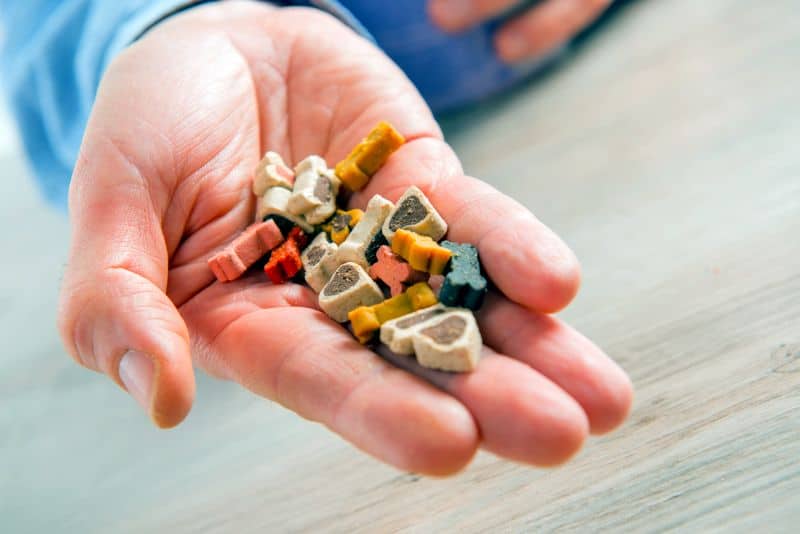
Luckily, teaching your dog to take treats gently doesn’t require much in the way of dog-training equipment! You likely have everything you need already.
- A few different types of high-value training treats (get a variety of sizes, shapes, and softness levels)
- A leash to help move your dog through space as needed
- A training treat pouch can help to deliver treats more cleanly
- Optional: a training clicker to help the dog understand when and where a treat will be delivered
Now that you’ve collected these simple objects, it’s time to get to work!
Teaching Your Dog to Take Treats Gently: A Step-by-Step Plan
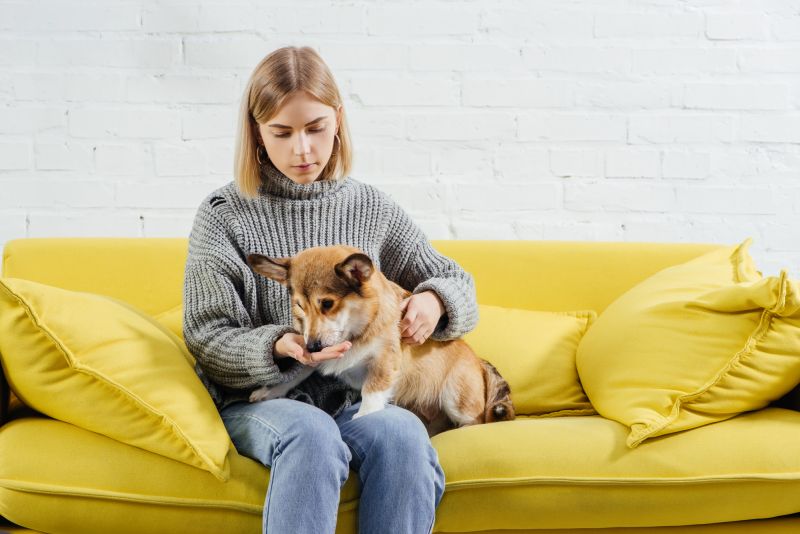
For most dogs, the easiest way to teach them to take treats gently is to work on your treat delivery skills.
It may seem counterintuitive to focus on your training mechanics when it’s Fido that’s chompy, but it’s much easier to control your treat delivery in a way that helps your dog learn to be gentler.
A few of the best tips for keeping your fingers intact while giving your doggo treatos include:
- Use Larger Treats. Generally when training, you want to use tiny treats — about the size of a pea for a 40- to 60-pound dog. However, if your dog is ultra-chompy it can help to use larger treats. A bigger target makes it easier for your dog to take treats gently. My border collie Barley gets pretty bitey during agility class — he’s just too excited! I almost always deliver HUGE treats (so they’re easy for him to see) on the ground to help Barley avoid biting me in this situation, because agility is inherently exciting. Sometimes the easiest solution is to just remove your hand from the equation!
- Deliver Treats Like a Horse Trainer. Have you ever fed an apple to a horse? Placing a treat in your cupped hand makes it much easier for a large animal to take the treat gently. If you put the treat in your palm and bring it to your dog, your pupper is much less likely to accidentally bite your hand. You can also deliver a handful of treats at once like this in practice. A bigger target (or more targets) helps your dog learn to use their tongue and incisors rather than biting your whole arm!
- Guide the treat into your dog’s mouth. Pushing your hand towards your dog’s mouth can also help guide the treat in. When getting bitten hurts, we tend to pull back. This can actually make the dog more frantic and worsen the problem in the long run! So, try guiding the treat into your dog’s mouth instead.
- Consistently Use a Marker Cue. Whether you use a clicker, “Good boy,” or any other cue, a marker can help your dog know exactly when and where to expect food. Fancy trainers actually use different marker cues to help their dog know whether the reward will be a tossed treat, “room service” treats delivered to their mouth, a tug toy, or a ball. While you don’t have to get that fancy, using a marker can help dogs relax and stop biting so hard. They know that when they hear the click, the food will appear in their person’s hand — no need to get frantic.
- Practice Treat-Taking As a Skill. Using a clicker alone won’t fix the problem of a dog that bites when taking treats. With my puppy Niffler (especially with his sharp puppy teeth) I specifically practiced the routine of: I click, he takes a treat from my cupped hand, he looks at me, repeat. I did not introduce “Sit” or “Down” until I felt confident that he understood how, when, and where to take treats. Ritualize your treat delivery and your dog will learn to work with you. Sloppy treat delivery on your part will lead to sloppy treat-taking on your dog’s!
- Reduce Stress Around Food. If your dog feels like he’s starving, he’s going to be chompy. For younger puppies or new shelter dogs (or just some major chowhounds), it can help to feed your dog a meal right before training. Most dogs are likely to relax a bit if they’re satiated.
- Reduce Excitement (or Fear or Frustration) In Training. Some dogs get extra-bitey when they’re excited, frustrated, or scared. If you’re dealing with a dog that’s just too excited about training, consider reducing excitement by moving farther from triggers, taking a break, or making training easier for a few repetitions.
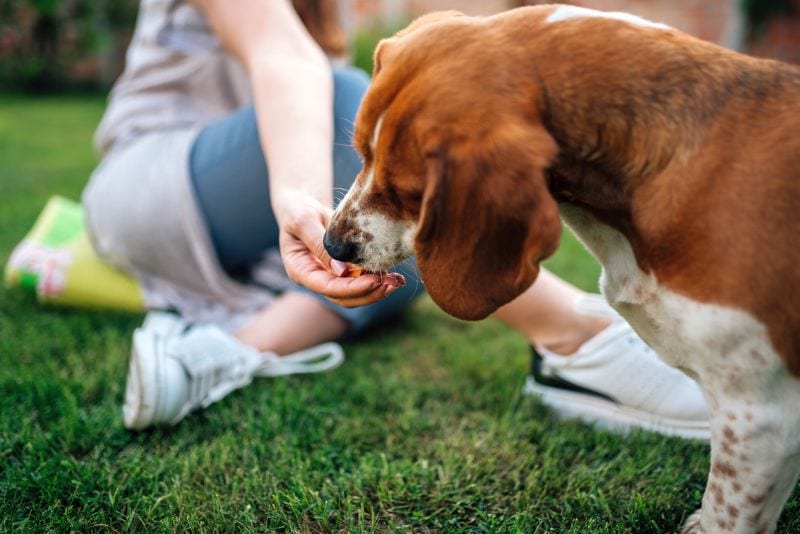
Many trainers suggest teaching your dog a “Gentle” cue by closing your hand around the treat if the dog dives in with too much gusto, then opening your hand again if he goes for it carefully.
This is the same method I use to teach a dog to “Leave it” cue and can help the dog learn to wait for you to deliver food to their mouth, but it will be confusing for your dog if you use the same method for “Leave it” and “Gentle.”
This doesn’t always transfer over well to treat delivery in “real life” and can actually frustrate the dog in some cases. You can add this exercise in, but if you notice your dog getting grabby or frustrated, stick to the other method above.
If you want a simple workaround, simply reward your dog for training by dropping the food or treats on the floor. I often drop treats into a bowl if I don’t want slobber on my hands or toss treats across the floor to build enthusiasm into the training game.
If your dog’s treat-taking skills are painful, consider not involving your hands in the process at all!
Pitfalls to Avoid: Common Treat-Delivery Mistakes Owners Make
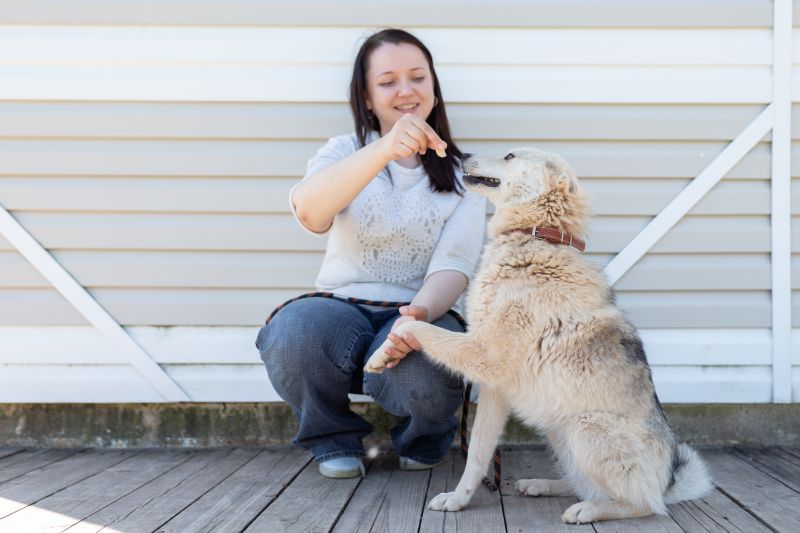
In addition to doing some of the things mentioned above, it’s also important to avoid doing a few things that may encourage your canine to chomp.
- Pulling your hand back right as the dog reaches for it. If you’re scared that Chomper is going to hurt your hand, pulling your hand back can actually make your dog try harder to snatch the treat. This can make the problem worse. Sometimes people try to teach a dog to be gentle by pulling the treat away as the dog reaches for it. This can build frustration and actually make the dog try harder to grab the treat faster!
- Pinching the treat between your thumb and forefinger. It’s practically impossible for your dog to gently take a treat if it’s sandwiched between your fingers. Remember to cup the treat in your hand to make it easier!
- Delivering treats in a variety of manners. Sometimes you drop the treats, sometimes you pinch, sometimes you hand them, sometimes you toss them? All that uncertainty makes it hard for your dog to gently and delicately take treats. Advanced trainers may embrace some of these methods as explained earlier, but if you’re reading this, you’re probably not an advanced trainer (yet!).
Is It Important to Teach Dogs to Take Treats Gently?
Whenever talking to clients about their training goals for their dogs, I have a simple saying, “If it’s not a problem, it’s not a problem.”
If you don’t mind that your dog is a bit grabby with treats but you don’t mind – don’t worry about it! You may, however, want to warn others (especially kids) before they give your dog a treat.
Can All Dogs Learn to Take Treats Gently?
It may take some patience and practice, but yes — all dogs can learn to take treats gently.
Just be patient and get creative with treat delivery options. Also, follow the tips and tricks we’ve shared above. With some practice, you’ll surely get there!
Alternative Approaches: Other Ways to Deliver Treats Without Getting Nipped
We’ve already discussed treat-handling mechanics, tossing treats, and the “Gentle” cue — but you still have more options!
When teaching puppy kindergarten, I often put a treat inside my palm, then close my fist part way around it so that you can see it in my palm between my forefinger and thumb. Imagine that you’re holding a microphone, and the butt of the microphone is where the treat is.
The puppy learns to use his incisors and tongue to lick the treat out of the hole in your hand. Making the hole a bit bigger or tipping your hand can help the treat come out more easily, again helping the puppy take treats more gently.
In extreme cases, you can also use a lickable treat. “Squeeze cheese,” dog-safe peanut butter on a spoon, or wet dog food in a portable squeeze tube can all be used to deliver wet food to a dog while keeping your fingers safe. When working in an animal shelter, my team used this technique often to keep our hands safe!
***
You certainly want to give your dog treats — they’re important for training, life enrichment, and bonding with your dog in general. But it’s obviously no fun to suffer nips and nibbles when you’re trying to do something nice for your pooch!
So, just be sure to embrace some of the tips above to figure out something that works for you and your four-footer. With a little practice (and some patience) you should be able to teach your dog to take treats gently, thereby sparing your fingers!
Does your dog take treats too roughly? What kinds of things have you tried to address the problem? Share your experiences with us in the comments below!
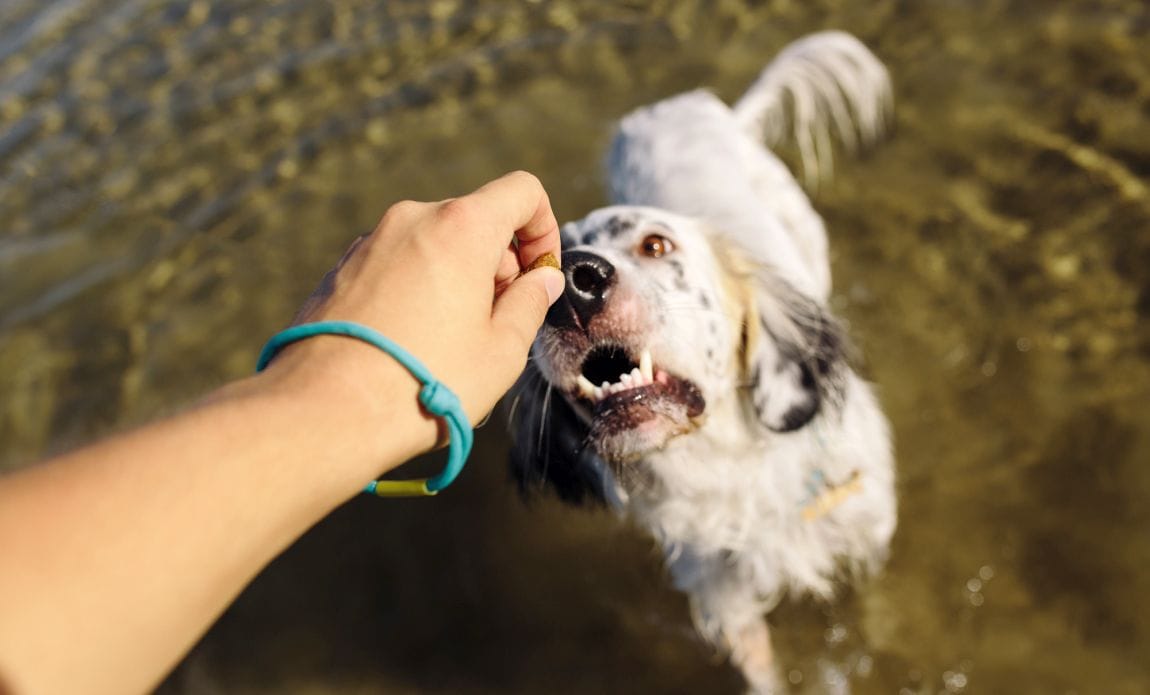

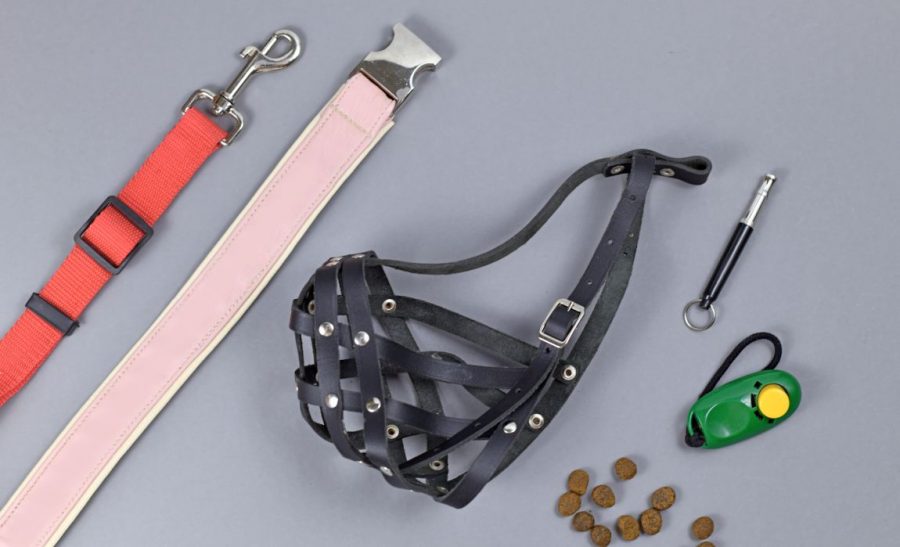


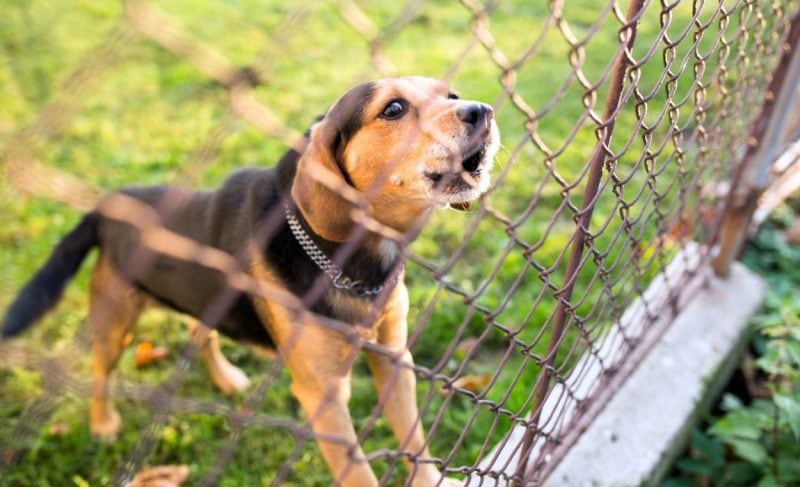
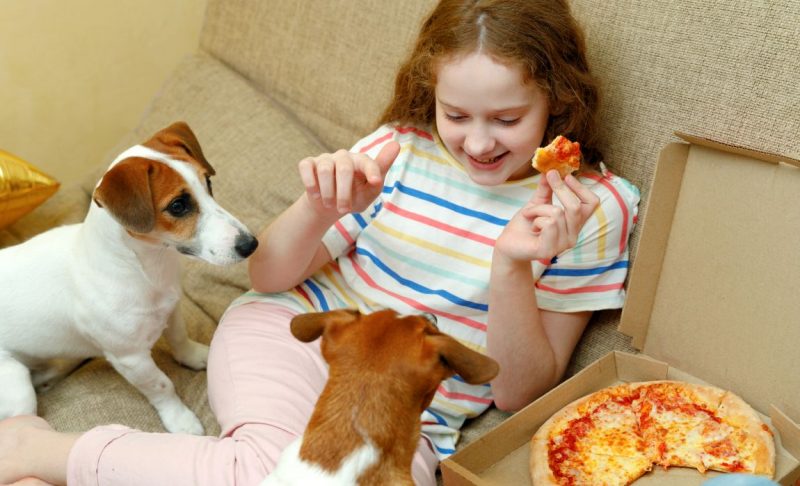
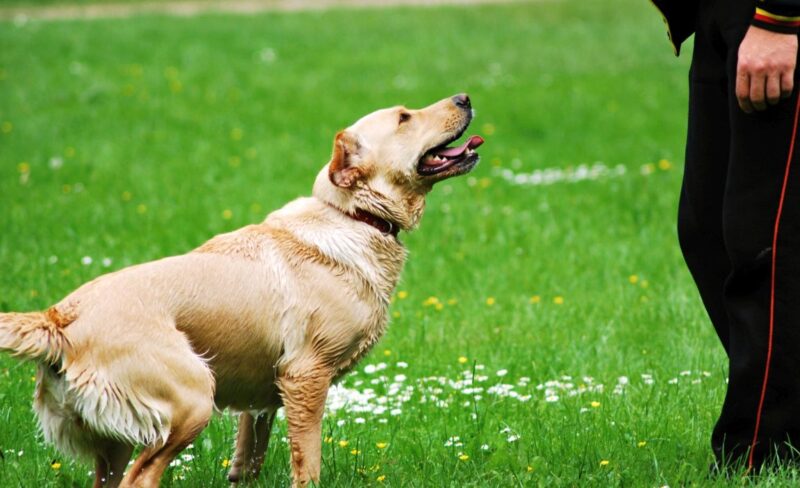
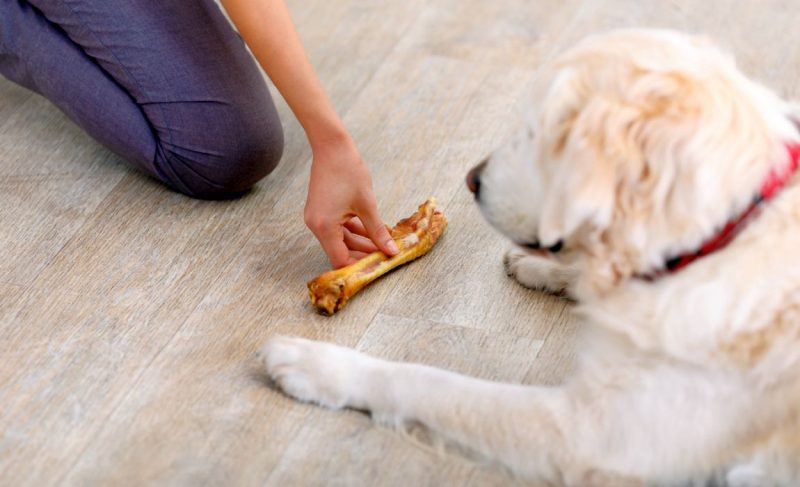
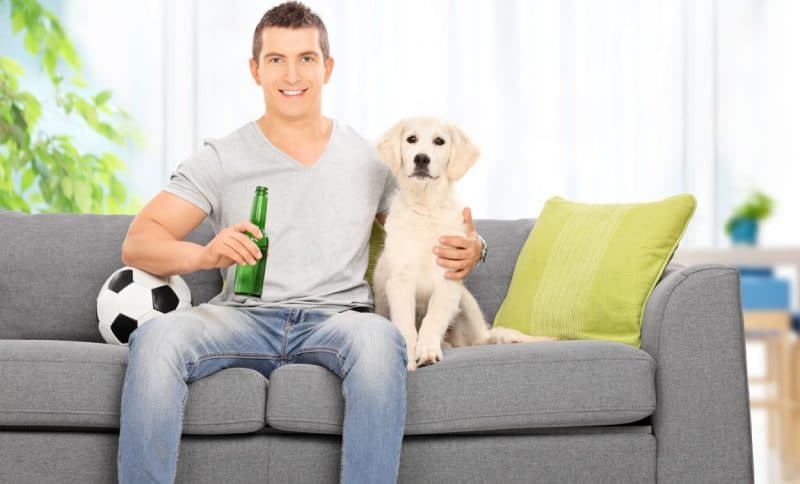
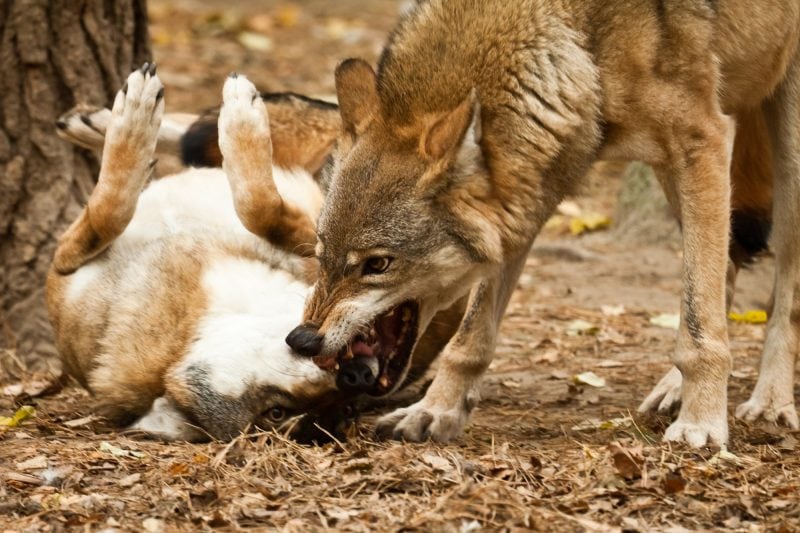

Leave a Comment